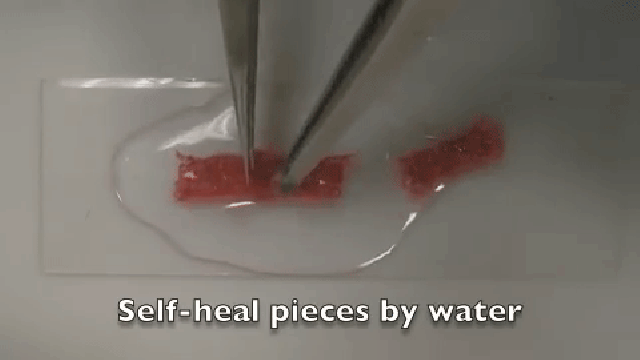When you rip clothing, you either have to go and get it repaired, repair it yourself or sigh heavily and toss it out. You’re lucky if you have the tools necessary to repair torn fabrics, or just have all the money in the world to pay someone else to fix it for you, but what if you could skip all that?
Photo credit: YouTube screenshot
Researchers at Penn State University are working on a way to make repairing clothes easier — by letting it repair itself. This is thanks to a liquid combination made from bacteria and yeast that can help most fabrics bind together. The results of this research are detailed in a recent issue of ACS Applied Materials & Interfaces.
“Fashion designers use natural fibres made of proteins like wool or silk that are expensive and they are not self-healing,” said Melik C. Demirel, professor of engineering science and mechanics at Penn State, in a statement. “We were looking for a way to make fabrics self-healing using conventional textiles. So we came up with this coating technology.”
From the video, the process seems rather simple. Take a torn piece of fabric, put a few drops of the magic liquid on it, apply warm water and press the edges together. It’s not seamless, but the fabric does stay put. Additionally, it can be flexed and remains strong, so it won’t break apart once it dries. Demirel also told CNN Money that it held up after a wash in a machine.
The liquid forms layers of materials on the fabric to form a “polyelectrolyte” coating, which is made up of positively and negatively charged polymers. It doesn’t have a name yet, but has similar properties to the proteins found in squid ring teeth, which also has self-repairing qualities. So maybe, Squid Ink (trademarked by Gizmodo)?
Researchers state that this could be applied after a tear, or during the manufacturing process to individual threads, so that the fabric already has the self-repair ability.
While most of us would apply it to everyday wear if available commercially, Demirel said that the main focus was in limiting the exposure of people who work with pesticides and other potentially hazardous chemicals. Besides supporting the strength of clothing, Demirel also suggests using enzymes that match the chemical being targeted.
“If you need to use enzymes for biological or chemical effects, you can have an encapsulated enzyme with self-healing properties degrade the toxin before it reaches the skin,” said Demirel.
No word yet on when it could be available commercially — since the Penn State researchers hope to next see if the liquid can withstand factors such as detergent. They also hope to replicate the self-healing properties of squids in a lab environment, instead of taking the proteins from the squids themselves.
“Science happens in small steps,” Demirel told CNN, shattering the hopes of people who want science to happen now everywhere.
